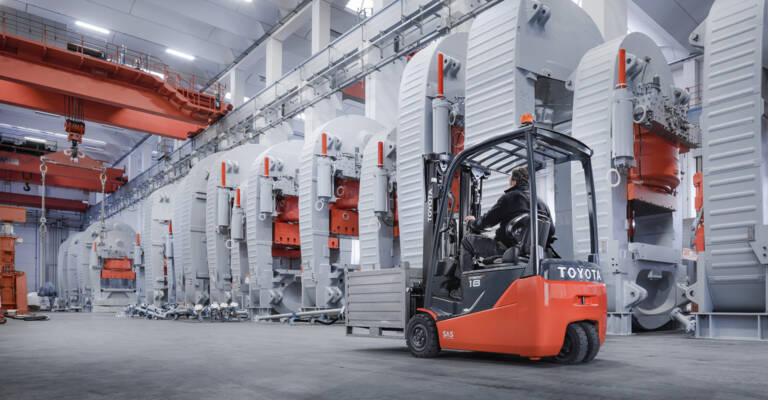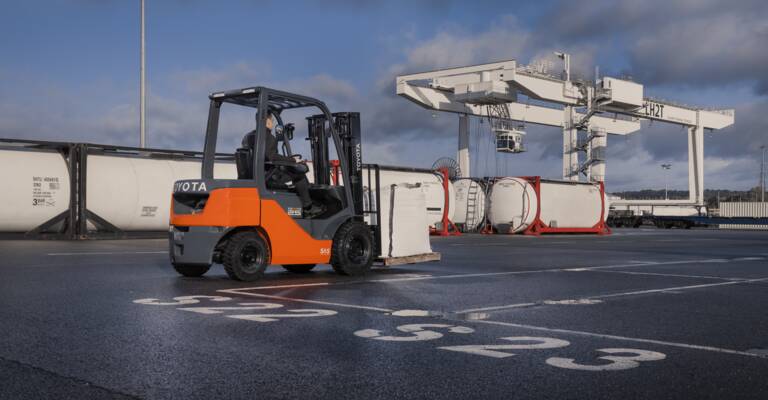5 questions to ask before you buy a counterbalanced truck
1. What type of load are you handling?
You need to know:
- The weight of your load
- What kind of pallets will be used
- The size and shape of the load
- How high you need to lift
It goes without saying that your truck’s lift capacity needs to exceed the maximum weight of your load. But you can’t just check this figure and move on.
The true lifting capacity of your CB truck, in the specific conditions it’s being used in, is called the residual capacity. This can depend on a host of factors: as well as load weight, there’s the size and shape of your load, distribution of weight within the load, the height of your storage space, and any forklift attachments required.
The more these affect the centre of gravity, the less residual capacity your CB will have. It’s essential to calculate the capacity you really require before buying a truck.
2. How much will the CB be used?
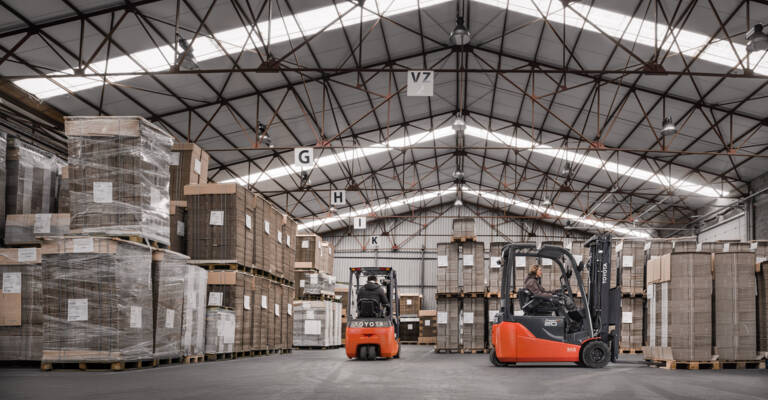
You need to know:
- How many shifts the truck will operate
- How much uptime you need
- How much maintenance time and cost you can afford
- How much time is available for charging
One of your biggest choices is whether you opt for an electric truck or a truck with an internal combustion (IC) engine. Defining how the truck will be used will help you make the right decision. Think about how many shifts you run, how many hours per shift the truck will be operating, and how much downtime that affords.
Electric trucks have fewer moving parts, meaning less risk of problems and unscheduled downtime. In terms of cost of ownership, the higher initial outlay for an electric truck is balanced out by a lower fuel cost and reduced maintenance costs. The battery capacity of electric trucks has come on in leaps and bounds recently – but you still need to make sure your schedule allows time for charging and/or battery replacement.
Conversely, IC trucks don’t require charging time, and are quick to refuel once the infrastructure is in place. IC engines are available with two different fuel options, diesel and LPG, suited to different usage environments – which leads on to…
3. What environment will the truck be working in?
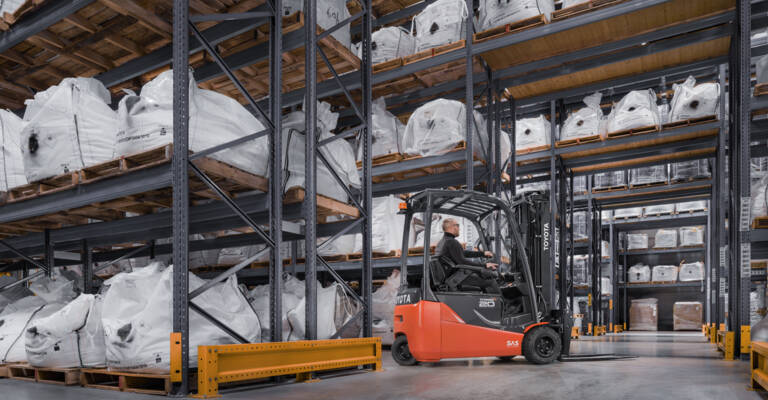
You need to know:
- Whether the truck will be working indoors, outdoors, or both
- Whether there is suitable space for charging
- Whether there is a diesel tank available
- Whether there is a sufficient ventilation system
An IC counterbalanced truck will excel outdoors, even in rough weather. However, indoor use is severely limited. It varies from country to country, but often, diesel-powered trucks cannot legally be used inside, and LPG-powered trucks can only be used if there is a sufficient ventilation system to take care of the exhaust emissions. Diesel trucks will require a dedicated refilling station, while LPG must be stored in a secure outdoor area.
Electric trucks can be used indoors or outdoors – although in cold temperatures, lead acid battery-powered trucks will not operate at full capacity. They also need a dedicated charging room. Lithium ion battery-powered trucks are an alternative that can be recharged anywhere, don’t require battery maintenance, and work well in chilled areas.
4. What kind of space are you manoeuvring into?
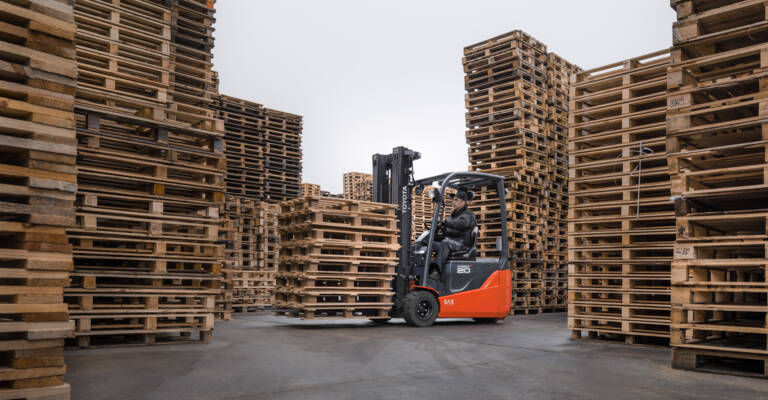
You need to know:
- What kind of application the truck will be used in
- The width of your aisles
- The required turning radius
Electric counterbalanced trucks are available with three or four wheels, which are suited to different types of operating space. If space is tight, you should go for a three-wheel truck. If operating outdoors on uneven floors, a four-wheel truck offers better stability.
Some trucks are designed specifically for facilities with narrow aisles. These have a compact chassis that enables a tighter turning radius. You can check the turning circle of a truck on its data sheet; for Toyota trucks, these are downloadable from the truck’s product page.
5. What features will the drivers appreciate?
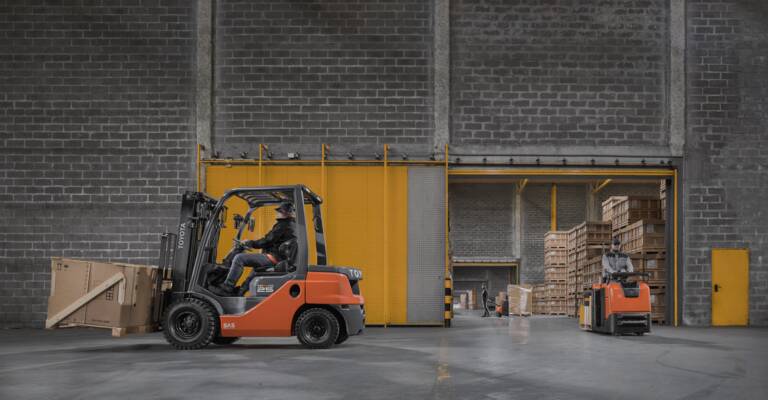
You need to know:
- Any challenges within your operating environment – uneven floors or slopes
- What ambient conditions your truck will operate in
- Whether the truck needs a cabin
Drivers’ time, as well as your money, is at stake when you buy a CB truck. For example, the truck’s tyres need to suit the floor where it operates, and any bumps or obstacle it needs to navigate. If there are slopes or ramps the truck needs to climb, make sure the truck you end up buying has a matching gradeability.
If the truck is going to operate outdoors, it will need to have a cabin, giving a good work environment for the driver. For indoor work, a cabin isn’t necessary but could improve the driver’s work environment by decreasing noise.
Driver experience is where electric trucks come into their own. They don’t emit fumes, and generally aren’t as noisy. They are the number one choice for indoor operations but can also operate outside in different weathers. Of course, an LPG counterbalanced truck could be used inside if you have the correct ventilation, as we mentioned earlier. When buying a new engine-powered CB, you should make sure that the truck is Stage V compliant. The purpose of Stage V is to reduce the emissions from combustion engines by lowering the limit of exhaust levels of diesel and gasoline (LPG) engines.
Know and go
Hopefully this guide has given you a greater understanding of what to consider when buying a counterbalanced truck. Below we have described four common types of applications and matched them with a recommended truck model, to help you with your choice. There are CB trucks with similar lifting capacity both within the electric-powered and the engine-powered range if you're leaning towards one power source more than the other.
Narrow indoors
- Tight space
- Even floor
- Light to moderate loads
Recommendation:
The Traigo24 and Traigo48 3-wheel compact model offers the agility to transport loads in dense areas with ease.
Indoors & Outdoors
- Moderate space
- Even floor
- Moderate loads
Recommendation:
The Traigo48 4-wheel model offers you stability and the ability to lift heavier loads to higher heights.
Indoors & Outdoors
- Moderate space
- Uneven floor
- Heavy loads
Recommendation:
The Traigo80 and Tonero LPG model offers you stability on uneven floors and agility to transport loads both indoors and outdoors with ease.
Outdoors
- Wide space
- Uneven floor
- Heavy loads
Recommendation:
The Traigo80 high-tonnage and Tonero model offers you stability on uneven floors and the ability to lift heavier loads to higher heights.

